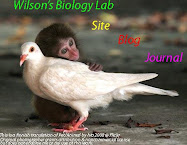Epigenetics
The remote large areas of northern Sweden are an unlikely place to begin a story about genetic science. The kingdom's northern county, Norrbotten, has barely any human life. An average of six people live in each square mile and this tiny population can reveal a lot about how genes work in our everyday lives.
Norrbotten is very isolated. In the 19th century, if the harvest was bad, people starved. The years people starved were the hardest for their vulnerability. For example, 1800, 1812, 1821, 1836 and 1856 were years of total crop failure and extreme suffering. But in 1801, 1822, 1828, 1844 and 1863, the land spilled so much wealth that the same people who had gone hungry in previous winters were able to feed themselves for months.
In the 1980s, Dr. Lars Olov Bygren, a preventive-health specialist who is now at the prestigious Karolinska Institute in Stockholm, began to think what long-term effects the celebration and famine years might have had on children growing up in Norrbotten in the 19th century and not just on them but on their kids and grandkids as well. He picked a random group of 99 individuals born in the Overkalix parish of Norrbotten in 1905 and used historical records to trace their parents and grandparents back to birth. By analyzing accurate natural records, Bygren and two colleagues figured how much food was available to the parents and grandparents when they were young.
Around the time he started collecting the data, Bygren had become interested with research showing that conditions in the womb could affect your health not only when you were a fetus but well into adulthood. In 1986, the Lancet published the first of two groundbreaking papers showing that if a pregnant woman ate poorly, her child would be extremely higher than the average possibility for heart disease as an adult. Bygren thought whether that effect could start before pregnancy: Could parents' experiences early in their lives somehow change the traits they passed to their offspring?
It was a different idea. After all, we have had a lasting deal with biology: whatever choices we make during our lives might ruin our short-term memory or make us fat or hurry to death, but they won't change our genes — our actual DNA. Which meant that when we had our own kids, the genetic slate would be wiped clean.
Also, any such effects of nurture (environment) on a species' nature (genes) were not supposed to happen so quickly. Charles Darwin, whose On the Origin of Species celebrated its 150th anniversary in November, taught us that evolutionary changes take place over many generations and through millions of years of natural selection. But, now, Bygren and other scientists have collected historical evidence showing that powerful environmental conditions (near death from starvation, for instance) can somehow leave an imprint on the genetic material in eggs and sperm. These genetic imprints can short-circuit evolution and pass along new traits in a single generation.
For instance, Bygren's research showed that in Overkalix, boys who enjoyed those rare overabundant winters — kids who went from normal eating to gluttony in a single season — produced sons and grandsons who lived shorter lives. Far shorter: in the first paper Bygren wrote about Norrbotten, which was published in 2001 in the Dutch journal Acta Biotheoretica, he showed that the grandsons of Overkalix boys who had overeaten died an average of six years earlier than the grandsons of those who had endured a poor harvest. Once Bygren and his team controlled for certain socioeconomic variations, the difference in longevity jumped to an astonishing 32 years. Later papers using different Norrbotten cohorts also found significant drops in life span and discovered that they applied along the female line as well, meaning that the daughters and granddaughters of girls who had gone from normal to gluttonous diets also lived shorter lives. To put it simply, the data suggested that a single winter of overeating as a youngster could initiate a biological chain of events that would lead one's grandchildren to die decades earlier than their peers did. How could this be possible?
Bygren's data — along with those of many other scientists working separately over the past 20 years — have given birth to a new science called epigenetics. At its most basic, epigenetics is the study of changes in gene activity that do not involve alterations to the genetic code but still get passed down to at least one successive generation. These patterns of gene expression are governed by the cellular material — the epigenome — that sits on top of the genome, just outside it (hence the prefix epi-, which means above). It is these epigenetic "marks" that tell your genes to switch on or off, to speak loudly or whisper. It is through epigenetic marks that environmental factors like diet, stress and prenatal nutrition can make an imprint on genes that is passed from one generation to the next.





No comments:
Post a Comment